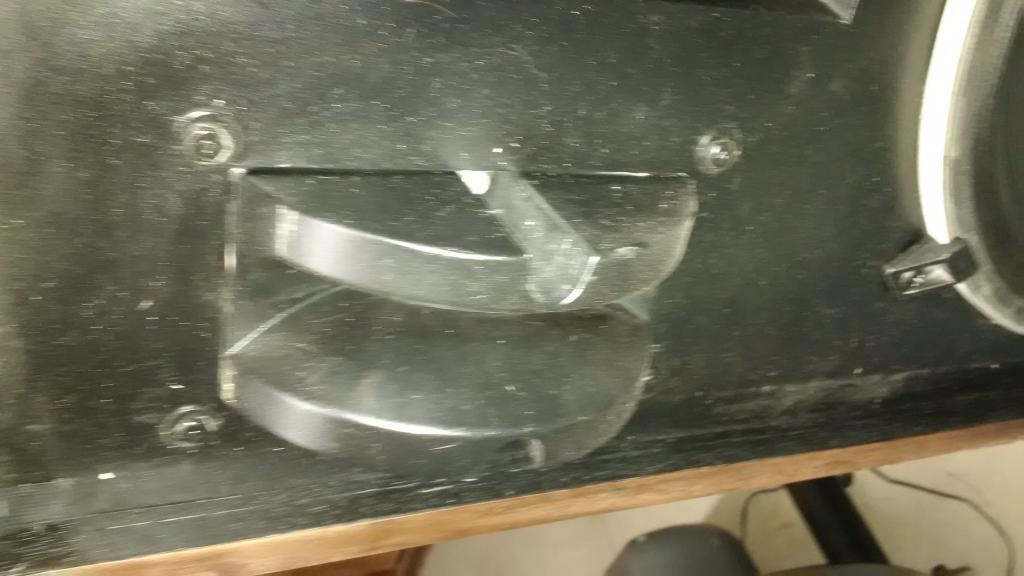I've been wanting to investigate hi efficiency speakers when I ran across a pair of these speakers (see pictures) being sold in los angeles area which I purchased. They were owned by a studio sound tech that purchased them from a studio in LA in the late 1980s where he worked. He said these replaced a pair of JBL 43XX speakers (in the late 1970s). Apparently they wanted more midrange impact so they had this three way built vs the JBL (which he said was a two way). Eventually these were replaced in the studio which is when he acquired them. He had the speakers rebuilt by orange county speaker in the late 1990s and they have been in storage most of the time since (which is why he was getting rid of them).
I do like the sound but have a few questions. Both speakers are built identically as shown so they are not symmetric. The compression driver is a renkus-heinz SSD-1800, the midrange is a 10" gauss 3184b, and the woofer is a 15" gauss 4583a. The exterior dimensions of the box are 32" x 25" x 18". He said the horn was oriented vertically to control dispersion. Would anyone know what kind of horn this is and what the dispersion characteristics are? The horn is about 7" in the vertical dimension and the discs appear to be solid metal. Similarly, the midrange (gauss 3184b) is in a small sealed box. The dimensions of the box are 10" x 10" x 6". I'd like to find the parameters for this speaker but can't find any data sheets. I believe he said the speaker should be above 95db efficiency.
Right now these are my garage speakers but I would like to improve them if I can. They have no crossover but came with cables and jacks for connecting each speaker to an amplifier. I would appreciate anyone with a knowledge of the horn characteristics or specs on the 3184b. Also, any comments on the speakers for listening to music or any simple design changes that might improve them.
Best Regards and Happy Holidays!
gwho




 Reply With Quote
Reply With Quote




 , JBL Fan mech986 says
, JBL Fan mech986 says 




